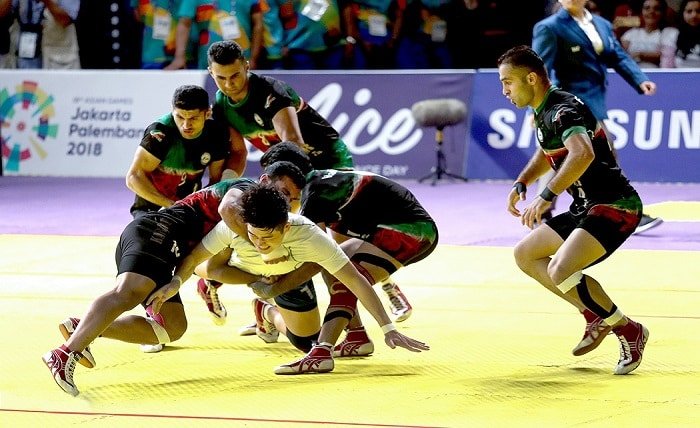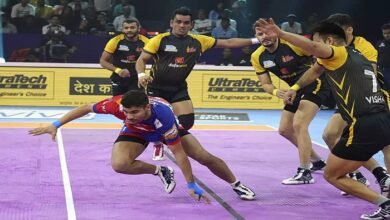Kabaddi Match: This Thrilling Sport

A kabaddi match is one of the most thrilling and physically demanding games, rooted deeply in South Asian culture. With its blend of skill, strength, and strategy, kabaddi has become one of the most popular sports, especially in countries like India, Pakistan, Bangladesh, and beyond. The evolution of kabaddi from a traditional rural pastime to an internationally recognized sport is a fascinating journey that mirrors the growing interest in cultural sports worldwide.
The kabaddi match has its origins dating back over 4,000 years. It is believed to have started as a way for communities to develop physical fitness and improve their self-defense skills. Over time, kabaddi transformed into a sport, with organized teams and established rules. Today, it is played professionally in leagues such as the Pro Kabaddi League, which has brought this traditional sport to the global stage.
The Rules of a Kabaddi Match
The rules of a kabaddi match are what make the game both exciting and complex. In its simplest form, kabaddi is a contact team sport involving two teams, each consisting of seven players, who take turns sending a raider into the opposing half of the court.
A kabaddi match lasts for two halves, usually of 20 minutes each, with a short break in between. The objective is to score points by raiding the opponent’s side, tagging opponents, and successfully returning to one’s side of the court without being tackled. Each player must hold their breath and continuously chant the word “kabaddi” to prove they aren’t inhaling. This adds an extra layer of challenge, testing the stamina and focus of the raider.
Player Roles in a Kabaddi Match
In a kabaddi match, the roles of the players are crucial to the team’s success. Each player has a specific job that contributes to both the offensive and defensive strategies of the game. There are primarily two main roles: raiders and defenders.
Raiders are the players who venture into the opponent’s side to tag opponents and score points. A successful raid requires agility, tactical thinking, and physical strength. Raiders must be quick enough to avoid being tackled, and they must also have the stamina to chant “kabaddi” without interruption during the raid.
Defenders, on the other hand, have the critical role of stopping the raider from scoring points. In a kabaddi match, defenders must work together to trap the raider, using different strategies and formations to anticipate and counter the raider’s moves. This makes coordination and communication between defenders a key component of successful kabaddi teams.
The Role of Strategy in a Kabaddi Match
A kabaddi match isn’t just about brute strength; it also requires deep strategic thinking. Teams that consistently perform well are those that can adapt to different styles of play, utilizing both offensive and defensive tactics to outmaneuver their opponents.
A typical strategy in a kabaddi match might involve setting traps for the raider or working in pairs to tackle the opposing team’s strongest players. Strategic formations, such as the chain formation where defenders link hands to create an impenetrable line, are often used to neutralize raiders. Similarly, raiders must use their wit to identify weaknesses in the opponent’s defense and decide the best approach to score points.
Skills Needed to Excel in a Kabaddi Match
Competing in a kabaddi match requires a unique combination of skills that set it apart from other sports. Players need a blend of strength, agility, mental sharpness, and the ability to make quick decisions. Physical fitness is of utmost importance, as the sport demands explosive power and relentless endurance.
One of the key skills in a kabaddi match is the ability to anticipate the opponent’s moves. Raiders must be able to read the defensive formation and identify opportunities, while defenders must be able to predict the raider’s path and act accordingly. Reflexes play a vital role as well—often the difference between a successful raid and a failed one comes down to a fraction of a second.
Famous Kabaddi Matches and Key Moments
Some iconic moments in kabaddi match history have left an indelible mark on the sport. From nail-biting finishes to underdog teams triumphing against established champions, kabaddi matches have provided some of the most exciting sporting moments.
One unforgettable kabaddi match is the 2016 Kabaddi World Cup final between India and Iran. It was a tightly contested match, with both teams showcasing exceptional skill and determination. Ultimately, India emerged victorious, securing a memorable win that emphasized teamwork, resilience, and tactical superiority. Such moments have helped kabaddi grow in popularity, inspiring new generations of players and fans.
Pro Kabaddi League: Transforming the Kabaddi Match Experience
The kabaddi match experience has been significantly elevated with the advent of the Pro Kabaddi League (PKL). The PKL, launched in 2014, has brought a professional, league-based format to the sport, similar to other major sports leagues around the world. It has brought new levels of excitement, visibility, and professionalism to the game.
The PKL features teams from different regions of India, each representing a city or state. The league’s format makes the kabaddi match more accessible to viewers, with live broadcasts and star-studded events that attract new fans. The high level of play, combined with the glitz and glamor of league-based sports, has made kabaddi a household name.
The Physical Demands of a Kabaddi Match
A kabaddi match is physically demanding, requiring players to be at the peak of their physical fitness. It combines elements of wrestling, tag, and strategic positioning, making it a highly challenging sport. The physical demands are not just about raw power; flexibility, agility, and endurance are also crucial.
In a typical kabaddi match, players constantly engage in physical confrontations, whether as raiders tagging defenders or defenders tackling raiders. This requires not only physical strength but also the ability to remain agile and quick on one’s feet. Players undergo rigorous training regimes, focusing on building stamina, improving reaction times, and increasing core strength.
Popularity of Kabaddi Matches in Different Countries
While the kabaddi match originated in South Asia, it has gained popularity beyond its borders. Countries like Iran, South Korea, Japan, and even Canada have started embracing the sport, with national teams participating in international tournaments.
Iran, in particular, has emerged as a significant player in the world of kabaddi, challenging traditional powerhouses like India and Pakistan. The growth of kabaddi in non-traditional regions demonstrates its universal appeal, where a mix of athleticism, strategy, and cultural tradition captures the imagination of fans worldwide.
Cultural Significance of Kabaddi Matches
A kabaddi match isn’t just a sporting event; it holds cultural significance, particularly in South Asia. In rural areas, kabaddi matches have traditionally been held during festivals, as a form of entertainment and community bonding. These matches are an opportunity for people to come together, celebrate their heritage, and showcase their physical prowess.
Even today, kabaddi matches play an important role in community gatherings, especially in rural parts of India. The Pro Kabaddi League has taken this cultural heritage and turned it into a modern spectacle, but the essence of community, unity, and celebration remains an integral part of every kabaddi match.
Women in Kabaddi Matches
The presence of women in kabaddi matches has grown significantly in recent years. Women’s kabaddi has gained visibility through national championships and participation in the Pro Kabaddi League’s women’s division. Female athletes have displayed impressive skills and determination, breaking stereotypes and encouraging other women to take up the sport.
The Women’s Kabaddi Challenge, launched as part of the Pro Kabaddi League, has helped elevate the sport for women. It has given a platform for female kabaddi players to showcase their talent and has inspired a new generation of young girls to pursue the sport professionally. The success of women’s kabaddi matches reflects the growing inclusivity and progress within the sport.
Conclusion
A kabaddi match is more than just a game—it’s a celebration of strength, strategy, and culture. From its origins in South Asia to its global presence today, kabaddi continues to captivate audiences with its intense physicality and intricate strategies. The sport has grown significantly, especially with the advent of the Pro Kabaddi League, bringing professional-level excitement to the masses. Whether you are a newcomer or a longtime fan, the kabaddi match experience is sure to leave you on the edge of your seat, cheering for every tackle and successful raid.
FAQs About Kabaddi Matches
1. How long does a kabaddi match last? A kabaddi match typically lasts for 40 minutes, divided into two halves of 20 minutes each, with a short interval in between.
2. What are the main roles of players in a kabaddi match? In a kabaddi match, the main roles are raiders, who attack and score points, and defenders, who aim to stop the raiders.
3. What is the Pro Kabaddi League? The Pro Kabaddi League is a professional kabaddi league in India that features teams from various cities competing in a league format.
4. How many players are on a kabaddi team? Each kabaddi team has seven players on the court during a match, with additional players as substitutes.
5. What skills are needed to excel in a kabaddi match? To excel in a kabaddi match, players need strength, agility, mental sharpness, and the ability to make quick decisions.




